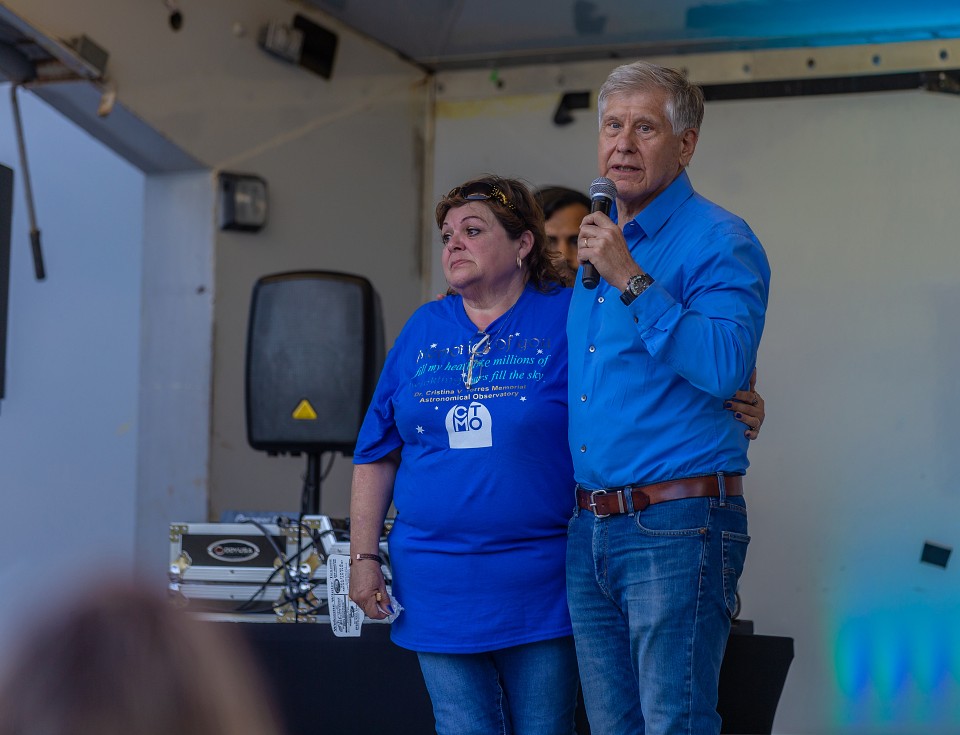By Maria Elena Hernandez
RIO GRANDE VALLEY, TEXAS – As part of the team that made possibly the most important astronomical discovery of the 21st century, Dr. Mario Diaz encouraged other Latin Americans to participate in the research.
“It is something I'm proud of,” said Diaz, UTRGV professor of physics and astronomy and director of the university’s Center for Gravitational Wave Astronomy.
Diaz, who is part of the team that first observed gravitational waves and later observed the collision of two neutron stars in 2017, is being awarded for his work and his support of Latin American researchers and students.
He will receive the Leopoldo Garcia-Colin Medal Award at the VII Leopoldo Garcia-Colin Mexican Meeting on Mathematical and Experimental Physics in Mexico City on Friday, Feb. 21.
“I feel very honored,” said Diaz, who said his support of Latin American students started with Cristina Torres, a research assistant professor in the CGWA who died in 2015.
“I met her when I first came to UT Brownsville in 1996 and convinced her, instead of studying engineering, to go into physics,” he said.
Torres later would earn her Ph.D. in physics and become a research assistant professor at the university’s CGWA. The UTRGV Dr. Cristina V. Torres Memorial Astronomical Observatory was named posthumously in her honor.
Related Link: Legacy of Service: UTRGV Physics Department remembers, honors Dr. Cristina Torres
Diaz said there has been tremendous excitement in the scientific community surrounding the Laser Interferometer Gravitational-wave Observatory (LIGO) Scientific Collaboration and the team’s first observation of gravitational waves.
“It was equivalent to the very first observation of the sky using an instrument in the time of Galileo,” Diaz said. “By doing that, a new era in astronomy started that was much more precise. There was a lot that was understood and started to be understood since then.”
Researchers hope to learn a lot about the “evolution of the stars and what happens to them and what’s going to happen with the universe,” he said.
“When you think that we're destined to get out of this planet eventually and go on to travel through the cosmos, we really need to know what the cosmos is all about.”
While in Mexico City, Diaz will give a talk about the latest gravitational wave research at the VII Leopoldo Garcia-Colin Mexican Meeting on Mathematical and Experimental Physics. The conference aims to introduce young Mexican scientists and graduate students to new areas of research.
ABOUT UTRGV
The University of Texas Rio Grande Valley (UTRGV) was created by the Texas Legislature in 2013 as the first major public university of the 21st century in Texas. This transformative initiative provided the opportunity to expand educational opportunities in the Rio Grande Valley, including a new School of Medicine and a School of Podiatry, and made it possible for residents of the region to benefit from the Permanent University Fund – a public endowment contributing support to the University of Texas System and other institutions.
UTRGV has campuses and off-campus research and teaching sites throughout the Rio Grande Valley including Brownsville (formerly The University of Texas at Brownsville campus), Edinburg (formerly The University of Texas-Pan American campus), Harlingen, Weslaco, McAllen, Port Isabel, Rio Grande City and South Padre Island. UTRGV, a comprehensive academic institution, enrolled its first class in the fall of 2015; the School of Medicine welcomed its first class in the summer of 2016, and the School of Podiatric Medicine in the fall of 2022.

